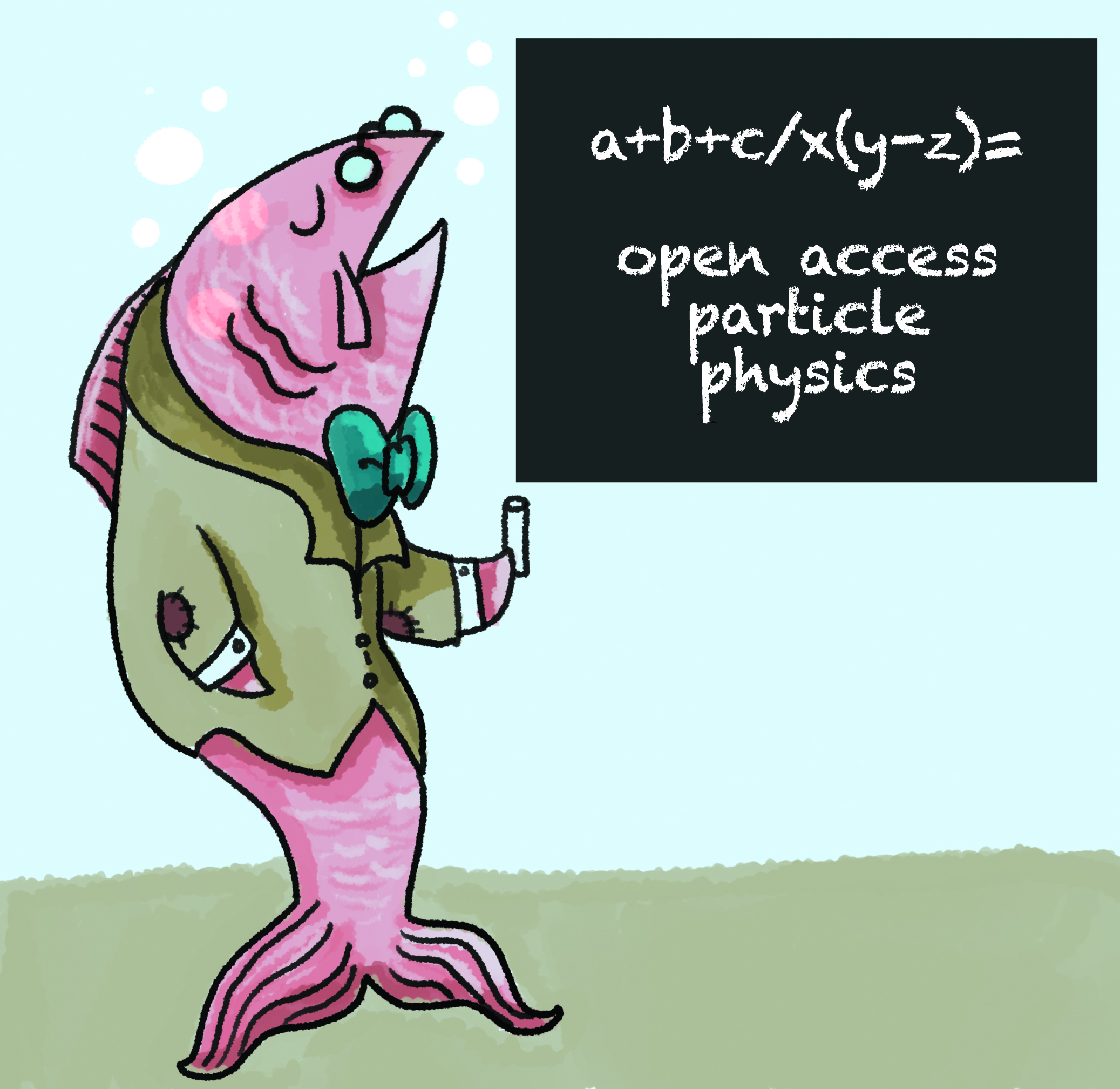The entire field of particle physics is going to switch to open-access publishing within the next few years, making almost all new research available for free.
This move will be paid for by SCOAP3, an international consortium of libraries, laboratories, and research funders. The strange thing about the deal is that it will hardly change anything – currently, the articles aren’t open access, but they are almost always available for free from the authors’ websites or the arXiv preprint server. It’s safe to say that anyone who wants to read particle physics research (and a good many who don’t) already can.
This deal has not changed the amount it costs to publish these articles, and these costs are still being paid by the same groups. The money is flowing from the same source to the same destination, it’s just been rerouted slightly in the middle. This might be pointless, but at least it’s not harmful, right? Well, open access advocate Stevan Harnad has argued that the arrangement is unstable. Once the SCOAP3 consortium has made the articles available for free, he says, “non-members are free-riders, and members can cancel if they feel a budget crunch.” The deal has very little if any benefit, and may introduce some problems that did not exist before. That something like this could happen highlights some of the major flaws of the journal system as it exists today.
The point of a journal is to get the research out to others in the field. But in this day and age, when you can upload a PDF to a globally accessible website for virtually no cost, it seems that journals are providing a lot of expensive services that are no longer needed. Open access is a distraction, a buzzword, a red herring. What is really needed is a complete overhaul of the way we disseminate research in the twenty-first century.
There is no logistical reason why we still need scientific journals to publish research. They are lumbering, unwieldy relics of an era where quarterly magazines were an efficient way of distributing information around the world. The main reason scientists are still publishing in journals is that publications do double duty as credentials. Your status in the academic world depends largely on the number of your publications, and the exclusivity of the journals in which you publish. But this secondary goal of journals often detracts from the much more important goal of making high quality research available to as many people as possible.
For example, replication of studies is not more common because journals often will not publish replications. They are miserable, uninteresting drudgery that no one wants to read and that do not look impressive on a CV. But they are also integral to the smooth operation of certain sciences. Diederik Stapel, the Dutch psychologist who was fired last year for fabricating data, was able to keep up the ruse for so long because very few attempts were made at replication, and none were published or followed up.
Negative results—“we tried X, it didn’t work, X is a dead end”—are also unlikely to appear in journals, but these can be some of the most important results we get. Psychiatrist and science advocate Ben Goldacre recently published an article in The Guardian about the antidepressant reboxetine. Goldacre prescribed reboxetine for a patient on the basis of published academic research showing that it was safe and effective. However, in 2010, researchers put together all the data on the drug and discovered that seven trials had been conducted between reboxetine and a placebo. Only one showed reboxetine was more effective. Coincidentally, this was the only one of the seven that was ever published. Other unpublished studies showed more frequent side-effects in patients given reboxetine.
The problem with academic publishing today is much deeper than high subscription prices – they are barely even a problem at all. The system is a weird Frankensteinian mishmash that does not meet all our needs or make the best possible use of today’s technology, and in some sciences, this can be a matter of life and death.
Open access cannot save us. Only a ground-up revolution can do that.






Open Access to Peer-Reviewed Research
The peer-reviewed journal literature needs to be freed from both paper and its costs, but not from peer review, whose “invisible hand” is what maintains its quality. Even in the online era, research is not just raw, unrefereed PDFs posted online. But plans (such as SCOAP3) by universities and research funders to pay the costs of Open Access Publishing (“Gold OA”) are premature. Funds are short; 80% of journals (including virtually all the top journals) are still subscription-based, tying up the potential funds to pay for Gold OA; the asking price for Gold OA is still high; and there is concern that paying to publish may inflate acceptance rates and lower quality standards. What is needed now is for universities and funders to mandate OA self-archiving (of authors’ final peer-reviewed drafts, immediately upon acceptance for publication) (“Green OA”). That will provide immediate OA; and if and when universal Green OA should go on to make subscriptions unsustainable (because users are satisfied with just the Green OA versions) that will in turn induce journals to cut costs (print edition, online edition, access-provision, archiving), downsize to just providing the service of peer review, and convert to the Gold OA cost-recovery model; meanwhile, the subscription cancellations will have released the funds to pay these residual service costs. The natural way to charge for the service of peer review then will be on a “no-fault basis,” with the author’s institution or funder paying for each round of refereeing, regardless of outcome (acceptance, revision/re-refereeing, or rejection). This will minimize cost while protecting against inflated acceptance rates and decline in quality standards.
Harnad, S. (1998) The invisible hand of peer review. Nature Web Matters. 5 November 1998.
Harnad, S. (2010) No-Fault Peer Review Charges: The Price of Selectivity Need Not Be Access Denied or Delayed. D-Lib Magazine 16 (7/8). http://eprints.ecs.soton.ac.uk/21348/
This phrase just about sums it all up:
“The main reason scientists are still publishing in journals is that publications do double duty as credentials. Your status in the academic world depends largely on the number of your publications, and the exclusivity of the journals in which you publish.”
Testing the Finch Hypothesis on Green OA Mandate Effectiveness
We have now tested the Finch Committee’s Hypothesis that Green Open Access Mandates are ineffective in generating deposits in institutional repositories. With data from ROARMAP on institutional Green OA mandates and data from ROAR on institutional repositories, we show that deposit number and rate is significantly correlated with mandate strength (classified as 1-12): The stronger the mandate, the more the deposits. The strongest mandates generate deposit rates of 70%+ within 2 years of adoption, compared to the un-mandated deposit rate of 20%. The effect is already detectable at the national level, where the UK, which has the largest proportion of Green OA mandates, has a national OA rate of 35%, compared to the global baseline of 25%. The conclusion is that, contrary to the Finch Hypothesis, Green Open Access Mandates do have a major effect, and the stronger the mandate, the stronger the effect (the Liege ID/OA mandate, linked to research performance evaluation, being the strongest mandate model). RCUK (as well as all universities, research institutions and research funders worldwide) would be well advised to adopt the strongest Green OA mandates and to integrate institutional and funder mandates.
Gargouri, Yassine, Lariviere, Vincent, Gingras, Yves, Brody, Tim, Carr, Les and Harnad, Stevan (2012) Testing the Finch Hypothesis on Green OA Mandate Effectiveness. Open Access Week 2012